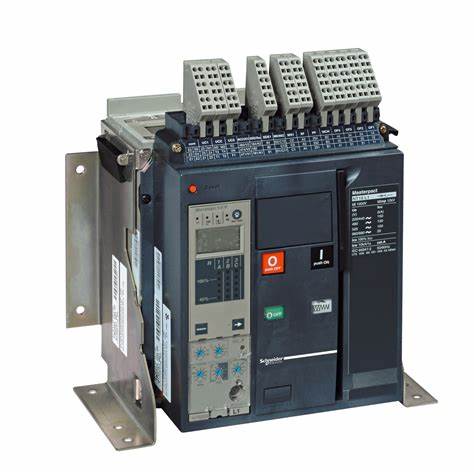Understanding Switches and Their Role in Our Daily Lives
In our modern world switches are an integral part of our daily routines often operating silently in the background while facilitating a wide range of activities. From flipping a light on when we enter a room to powering up our electronic devices switches make the complex network of electrical systems that power our homes offices and factories simple to control. But what exactly are switches and how do they work?
What is a Switch?
A switch is a basic electrical component used to control the flow of electricity in a circuit. When a switch is “on” it allows electricity to flow completing the circuit and powering whatever device is connected. When the switch is “off” it interrupts the flow of electricity cutting the power to the device. In essence a switch is a tool that enables us to easily control electrical devices and systems.
Switches come in a variety of forms from simple mechanical devices to more sophisticated electronic switches found in advanced technology. They can control everything from basic lights and fans to complex machines and computers. Whether it’s the physical switch you press on your wall or the touch sensitive power button on your smartphone switches are involved in nearly every aspect of our daily lives.
Types of Switches
- Mechanical Switches: These are the traditional on/off switches you typically see in homes and offices. They can be toggles rocker switches push button switches or rotary dials. Each type serves the same purpose: completing or interrupting the circuit.
- Push button Switches: These are widely used in devices such as phones computers and appliances. When you press the button it either makes or breaks the connection turning the device on or off.
- Touch sensitive Switches: Found in many modern electronics these switches operate through capacitive touch meaning they respond to the touch of a finger without the need for physical movement.
- Smart Switches: With the rise of smart homes there are now switches that connect to Wi Fi networks enabling remote control via smartphone apps or voice assistants like Amazon Alexa and Google Assistant.
How Do We Use Switches in Our Routine Life?
1. Lighting Control
The most common use of switches is to control lighting in our homes. From simple wall mounted switches to dimmer switches these devices allow us to manage lighting based on our needs. With the advent of smart switches homeowners can even control the lighting from their smartphones or through voice commands.
2. Home Appliances
Think about all the appliances in your home—microwaves refrigerators air conditioners and toasters. These are powered and controlled by switches. In many cases a flip of the switch on the device or a press of a button on the remote is all it takes to turn these appliances on or off.
3. Computers and Electronics
Every time you turn on a computer TV or gaming console you’re engaging a switch. While older electronics had physical power buttons newer devices often use touch sensors or remote controls as switches. With advancements in technology even turning on your TV can now be done by voice command via digital assistants.
4. Security Systems
Many modern security systems including alarms and cameras rely on switches to arm or disarm the system. Smart home systems allow users to control these switches remotely ensuring security even when they are away from home.
5. Transportation
In vehicles switches are used for controlling lights wipers air conditioning and more. From the ignition switch that starts the car to the switches that control the radio or seat settings these small devices make the driving experience smoother and safer.
6. Industrial and Commercial Use
In workplaces factories and manufacturing plants industrial switches are used to control large machines assembly lines and safety equipment. These switches are often built to withstand harsh environments and high voltage applications ensuring the safe operation of complex systems.
7. Entertainment Systems
Whether it’s turning on a TV adjusting the volume of a speaker system or switching between gaming consoles we rely on switches to navigate the entertainment systems that enhance our leisure time. Remotes app based controls and even motion sensitive switches are commonly employed in these contexts.
8. Smart Homes
The integration of smart home technology is making switches more dynamic. Smart light switches thermostats and even smart outlets can be controlled remotely. With the rise of voice assistants like Amazon Alexa Google Assistant and Apple’s Siri smart switches can now be activated hands free offering convenience and energy efficiency.
Switches and Energy Efficiency
Switches not only make it easier to control electrical devices but they also play a key role in energy conservation. By turning off devices when not in use switches help reduce electricity consumption which in turn lowers energy bills and reduces the carbon footprint. This is especially important in the context of smart home devices where automated timers and remote control systems help ensure that appliances are powered off when not needed.
Safety and the Importance of Proper Use
While switches make our lives easier it’s important to use them safely. Faulty or improperly installed switches can lead to electrical malfunctions or even fires. For example faulty light switches can cause sparks that may ignite surrounding materials. Always ensure that switches are in good working condition and that they are used in accordance with safety guidelines.
In more complex systems such as industrial machinery or electrical circuits in a home switches should be properly rated to handle the voltage and current of the devices they control. Overloaded switches can fail and pose safety hazards.
Conclusion
Switches are indispensable tools in our daily lives powering the devices and systems that we rely on every day. From simple light switches to sophisticated smart home controls they enable us to manage energy use maintain safety and enjoy modern conveniences. Understanding the different types of switches and their functions helps us appreciate the role they play in creating an efficient connected and safe living environment. So the next time you flick a switch remember it’s not just about turning something on or off; it’s about making modern life work seamlessly.

